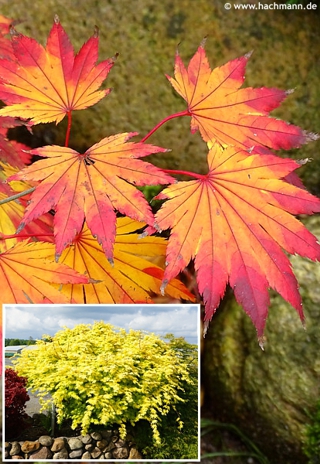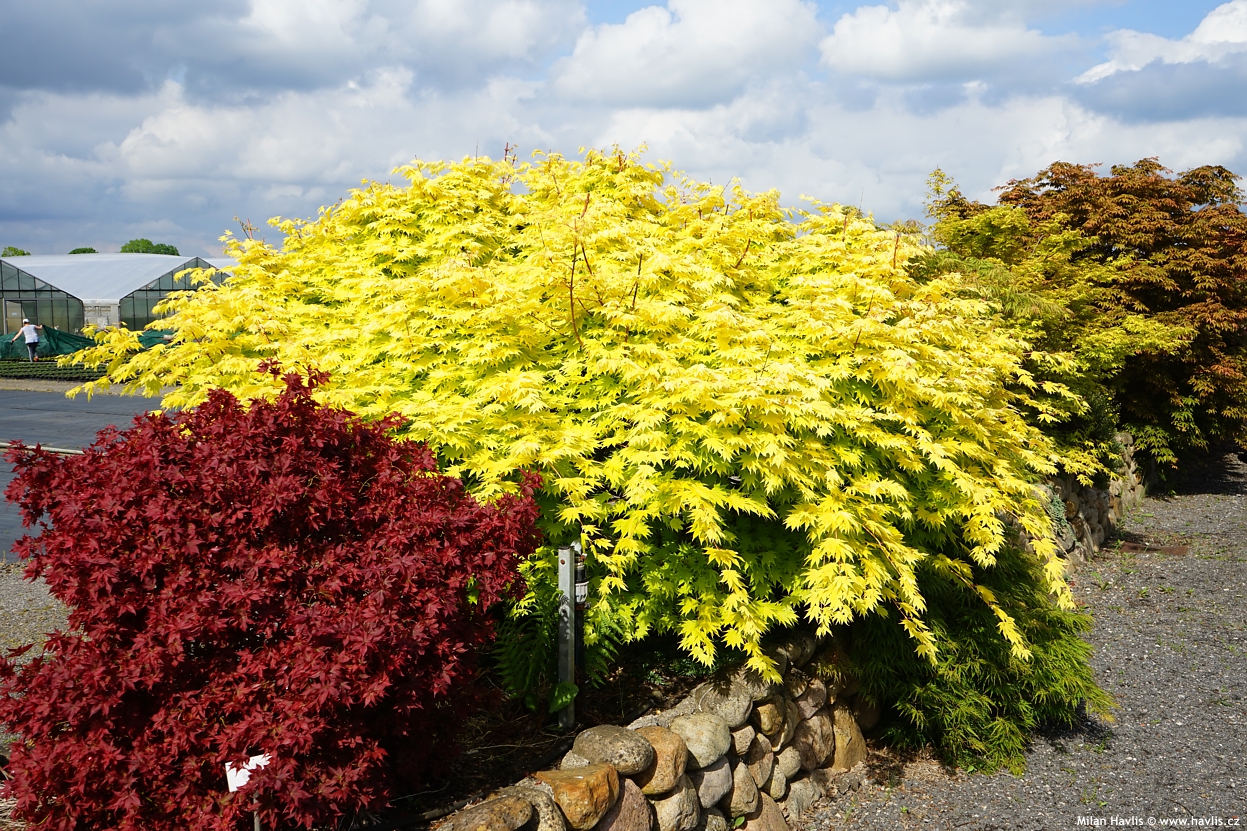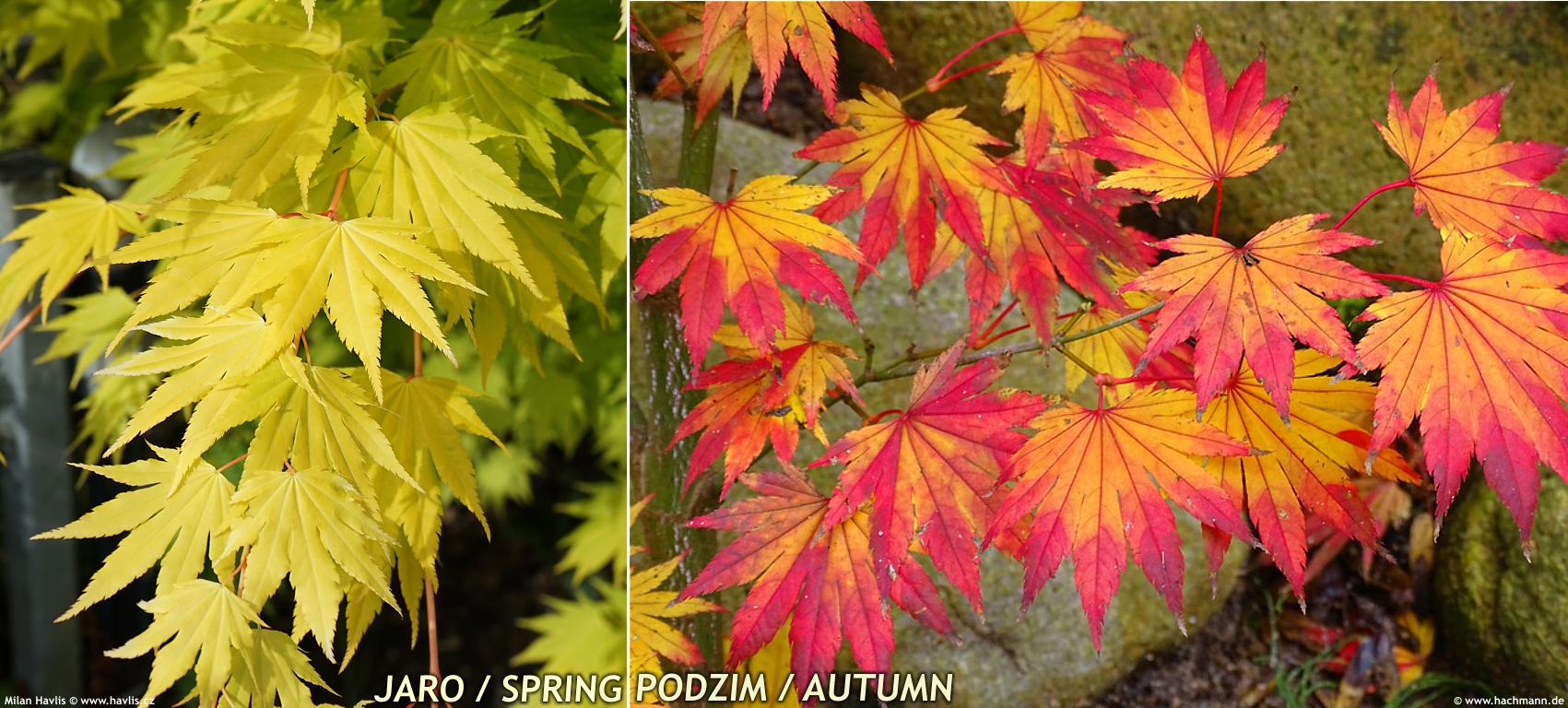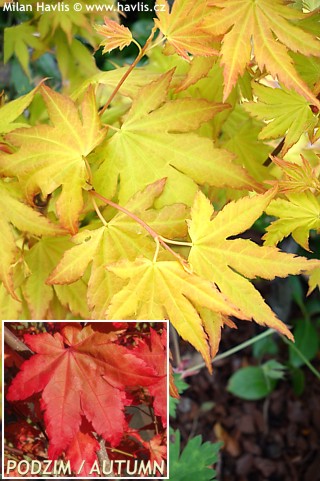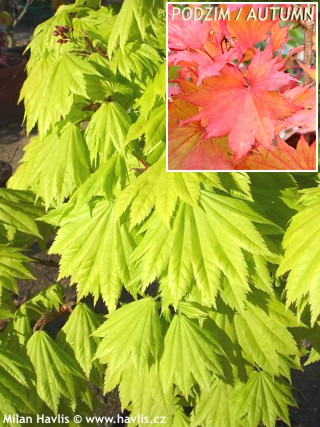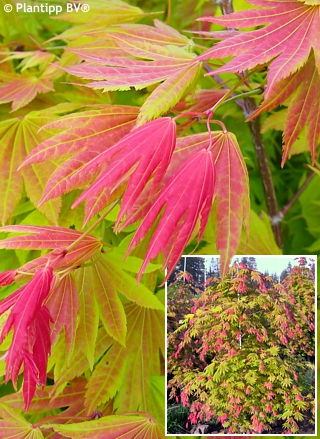Acer shirasawanum 'JORDAN' Shirasawa maple, Japanese maple
size/type
medium-sized shrub,taller shrub
usual height
2-3m
usual width
2-3m
leaves
deciduous broadleaf
colour of leaves
location
full to partial sun
soil type
acidic (peaty) to neutral
soil moisture requirements
evenly moist (dislikes drought)
USDA zone (lowest)
5 (down to -29°C)
winter protection
for zone 5+6

for zone 7

categorized
Acer
Japanese maples are the crème de la crème of every garden. They are compact, dense shrubs or majestic looking small trees. Every garden can have one without a need for simulating Japanese garden style. Currently, there are numerous varieties in the market, but we prefer to stick with the old-time favourites that proved to do well in our Central European climate or test new ones to see whether they deserve the attention.Shirasawan’s maple is a sought-after species of Japanese maple valued mostly for its unique leaf shape. To date (July 2020) there are 17 recognized varieties. Jordan is a variety from Italy where it was found in the Gilardelli Fratelli di Giordano E Nello Gilardelli nursery. If you know the area, you can easily guess where exactly. Here’s a clue: it is the Mecca of most Italian growers. Got it? Pistoia in Tuscany, of course. It was named after the owner's son Giordano and the cultivar’s name was later simplified to Jordan to make life on non-Italian speakers easier.
Description of the plant:
Jordan maple boasts a beautiful colour play on its leaves. They are deciduous, in spring they emerge in a dazzling shade of bright yellow colour with soft pink to orange margins and in summer they mature to rich golden yellow or chartreuse on less insolated branches. The leaves put on a final show in autumn when they turn several warm shades of orange, salmon, and scarlet. The leaf shape confirms the assumption that Jordan is most likely a spontaneous hybrid between a. shirasawanum and a. palmatum. The leaves are not as shell-shaped as on a. shirasawanum and have deep lobes corresponding to a. palmatum species. They are palmate and divided into 7-11 acuminate leaflets with delicately notched margins.It grows moderately to a broadly vase-shaped shrub or a small multi-stemmed tree of dense habit. Branches are distinctly mahogany orange and petioles are salmon pink all through the growing season. The tips of branches often become dry after winter and are best pruned not to disfigure the appearance of a fully leaved shrub. It looks especially beautiful grown among maroon-leaved maples.
All green or yellow-leaved Japanese maples do best in filtered sunlight or part shade in neglected gardens. But if you are ready to water them during hot and dry spells of the season you can grow recommended varieties in full sun, too. Red-leaved maples on the contrary NEED full sun to colour well, even the dissectum type with deeply cut foliage.
Japanese maples prefer light, acidic, well-drained soil that will retain moisture – keep them mulched at all times. If you feel you need to feed it, use balanced, slow-release fertilizers only. They can be pruned in early winter or trimmed and shaped for bonsai in early summer. Still, I assume that each Japanese maple is so beautiful only if left to its own devices without any intervention, making each one an unrepeatable original. Plants older than 3-5 years (wood maturity pending) are fully hardy to about -29 °C (USDA zone 5).
Last update 08-03-2024
QUICK PRICE OVERVIEW
CURRENTLY SOLD OUT
WANT TO TRY A SIMILAR PLANT?












